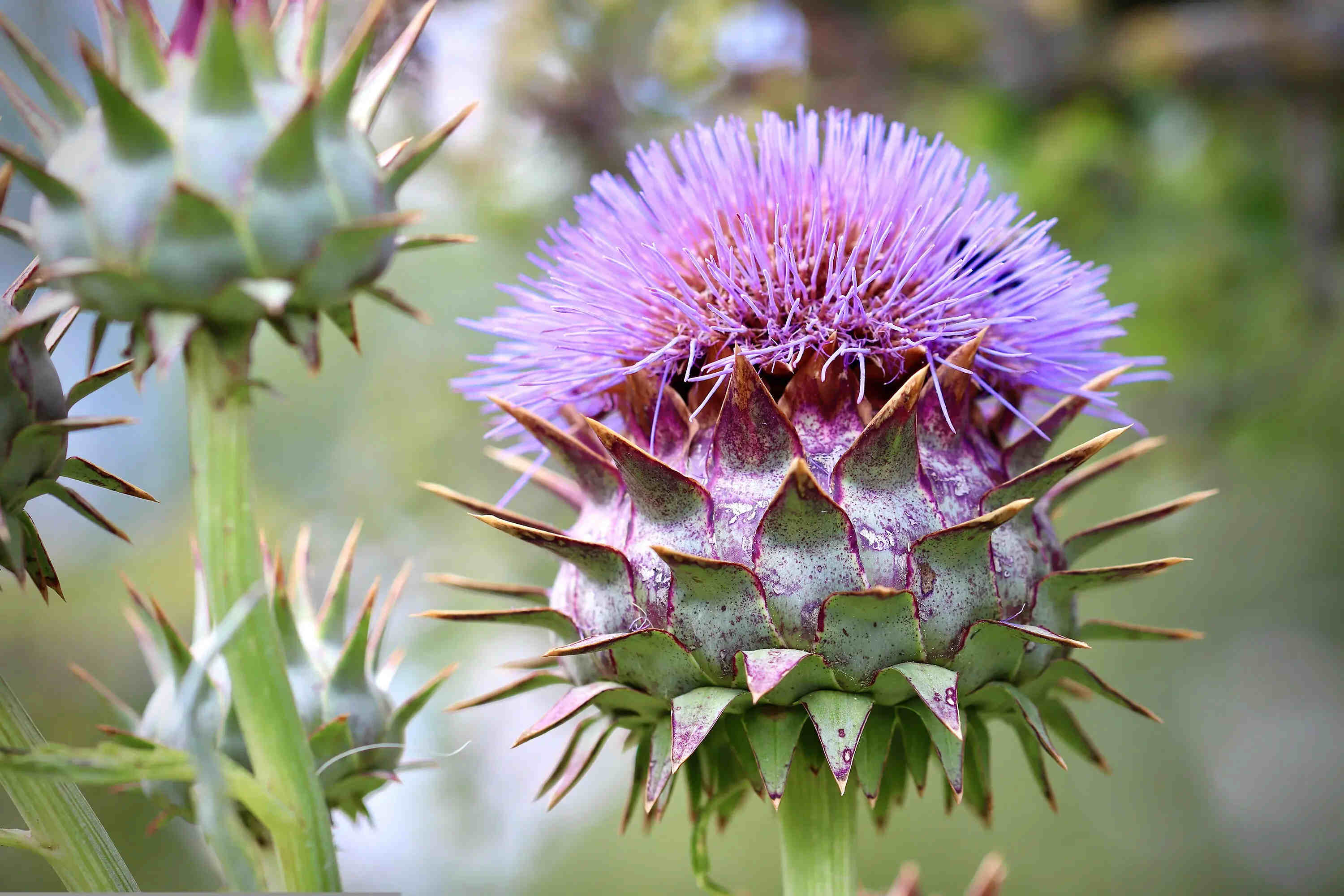
Cardoon, often mistaken for its close relative the artichoke, is a unique vegetable with a rich history and fascinating characteristics. Native to the Mediterranean, this thistle-like plant has been cultivated for centuries, not just for its culinary uses but also for its ornamental appeal. Did you know that cardoon was once a staple in ancient Roman feasts? Its stalks, which resemble celery, are the edible part and can be prepared in various delicious ways. Beyond the kitchen, cardoon has also found its place in traditional medicine and even in modern biofuel research. Curious about how this plant can thrive in your garden or what makes it a superfood? Read on to uncover 28 intriguing facts about cardoon that will leave you amazed and perhaps a bit hungry!
What is Cardoon?
Cardoon, also known as Cynara cardunculus, is a thistle-like plant native to the Mediterranean region. It's closely related to the artichoke and has been cultivated for centuries for its edible stalks and leaves.
- Cardoon belongs to the Asteraceae family, which includes daisies, sunflowers, and chrysanthemums.
- The plant can grow up to 5 feet tall, making it quite a sight in any garden.
- Cardoon has large, spiny leaves that can reach up to 3 feet in length.
- The plant produces beautiful purple flowers that attract bees and other pollinators.
Nutritional Benefits of Cardoon
Cardoon isn't just a pretty plant; it's also packed with nutrients. Let's dive into some of the health benefits this unique vegetable offers.
- Cardoon is low in calories, making it a great addition to any diet.
- It's rich in fiber, which aids in digestion and helps maintain a healthy gut.
- The plant contains significant amounts of vitamins C and K, essential for immune function and bone health.
- Cardoon is also a good source of potassium, which helps regulate blood pressure.
Culinary Uses of Cardoon
Cardoon has a unique flavor that's often described as a mix between celery and artichoke. It's a versatile ingredient in the kitchen.
- In Mediterranean cuisine, cardoon is often used in soups and stews.
- The stalks can be boiled, steamed, or fried, offering various textures and flavors.
- Cardoon pairs well with rich, creamy sauces, making it a popular choice for gratins.
- In Italy, cardoon is a key ingredient in the traditional Christmas dish, Bagna Cauda.
Growing Cardoon in Your Garden
If you're interested in growing your own cardoon, here are some tips to get you started.
- Cardoon prefers full sun and well-drained soil.
- The plant is drought-tolerant but benefits from regular watering during dry spells.
- It's best to start cardoon seeds indoors 6-8 weeks before the last frost.
- Transplant the seedlings outdoors once they're strong enough to handle the elements.
Historical Significance of Cardoon
Cardoon has a rich history that dates back to ancient times. It has been used for various purposes over the centuries.
- The ancient Greeks and Romans cultivated cardoon for its medicinal properties.
- In the Middle Ages, cardoon was believed to have aphrodisiac qualities.
- The plant was introduced to the Americas by Spanish settlers in the 16th century.
- Cardoon was a popular vegetable in Victorian England, often featured in elaborate dishes.
Cardoon in Modern Medicine
Modern science has begun to explore the potential health benefits of cardoon. Here are some findings.
- Cardoon extract has been studied for its potential to lower cholesterol levels.
- The plant contains antioxidants that may help protect against certain types of cancer.
- Cardoon has anti-inflammatory properties, which can benefit those with arthritis.
- Some studies suggest that cardoon may help improve liver function.
Fun Facts About Cardoon
Let's wrap up with some fun and quirky facts about this fascinating plant.
- Cardoon is sometimes called "artichoke thistle" due to its close relationship with the artichoke.
- The plant's flowers can be used to make a vegetarian rennet for cheese-making.
- In some cultures, cardoon is considered a symbol of strength and resilience.
- Cardoon has been featured in various works of art, including paintings by famous artists like Vincent van Gogh.
Cardoon: A Unique Veggie Worth Trying
Cardoon, often overshadowed by its cousin the artichoke, deserves a spot in your kitchen. This Mediterranean plant, with its celery-like stalks, offers a distinct flavor that’s both nutty and slightly bitter. Packed with fiber, vitamins, and antioxidants, it’s a nutritious addition to any meal. Cooking cardoon might seem tricky, but once you get the hang of it, you’ll find it’s quite versatile. Whether roasted, boiled, or added to stews, it brings a unique taste to your dishes. Plus, growing cardoon in your garden can be rewarding, as it’s not only edible but also visually striking with its large, silvery leaves. Give cardoon a try next time you’re looking for something different to spice up your culinary adventures. You might just find a new favorite veggie!
Was this page helpful?
Our commitment to delivering trustworthy and engaging content is at the heart of what we do. Each fact on our site is contributed by real users like you, bringing a wealth of diverse insights and information. To ensure the highest standards of accuracy and reliability, our dedicated editors meticulously review each submission. This process guarantees that the facts we share are not only fascinating but also credible. Trust in our commitment to quality and authenticity as you explore and learn with us.
